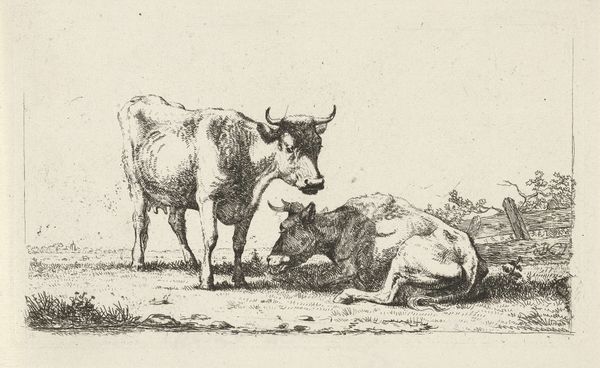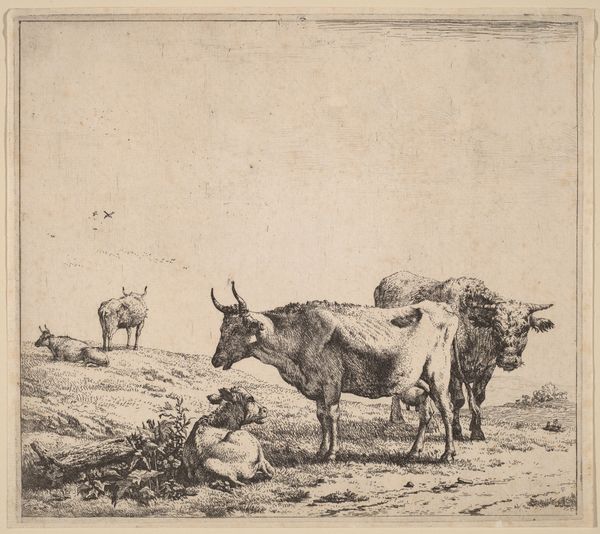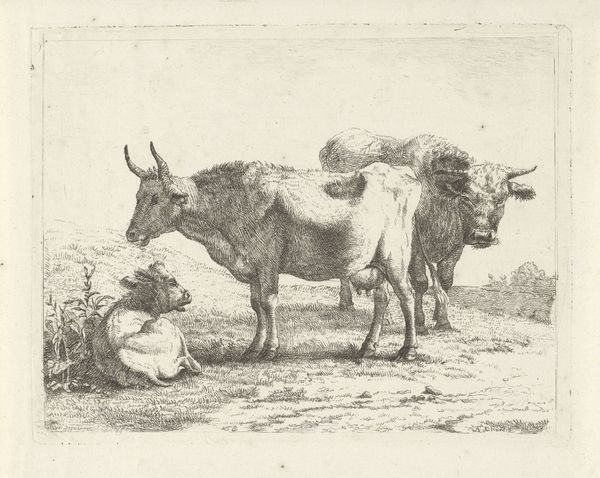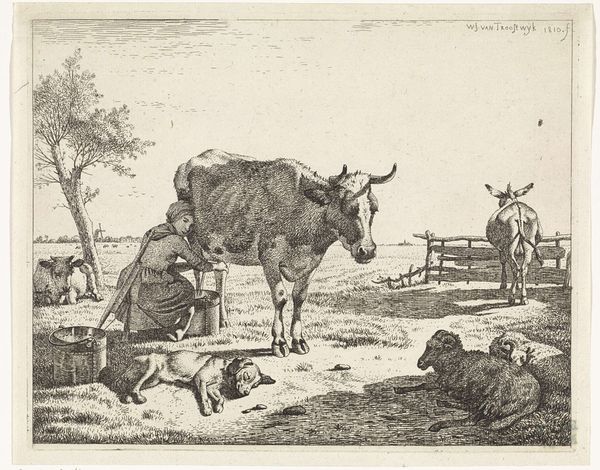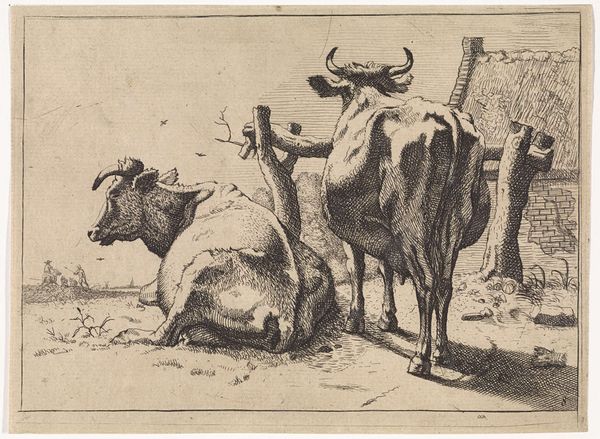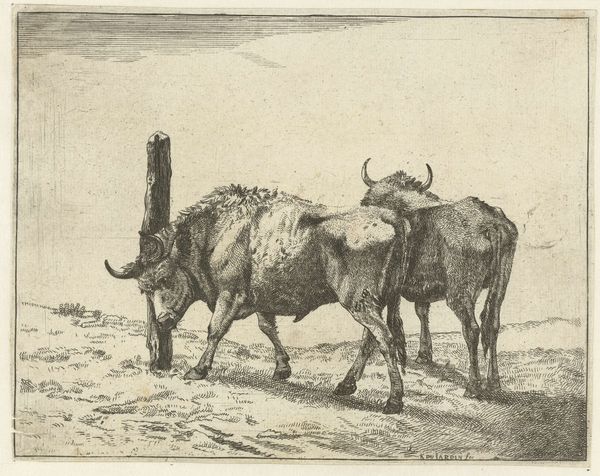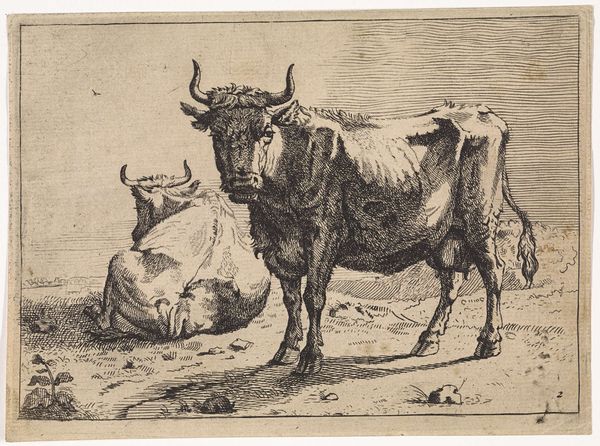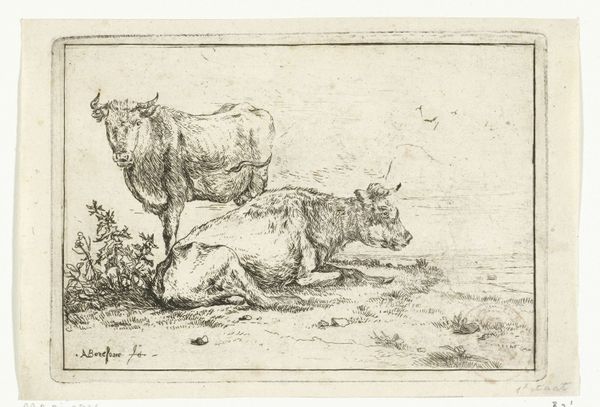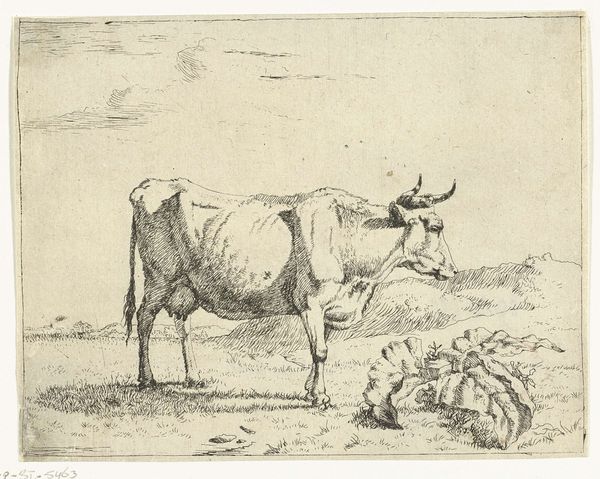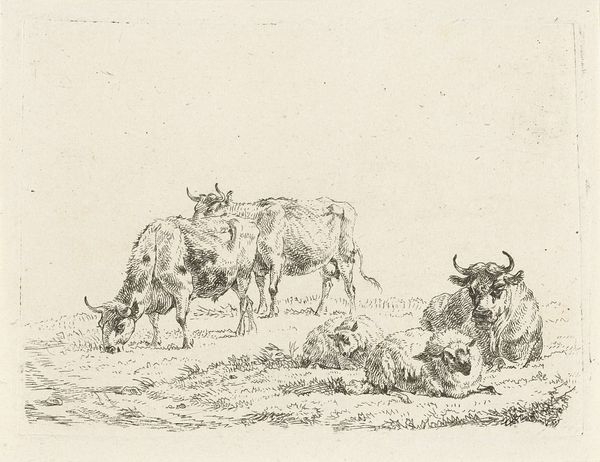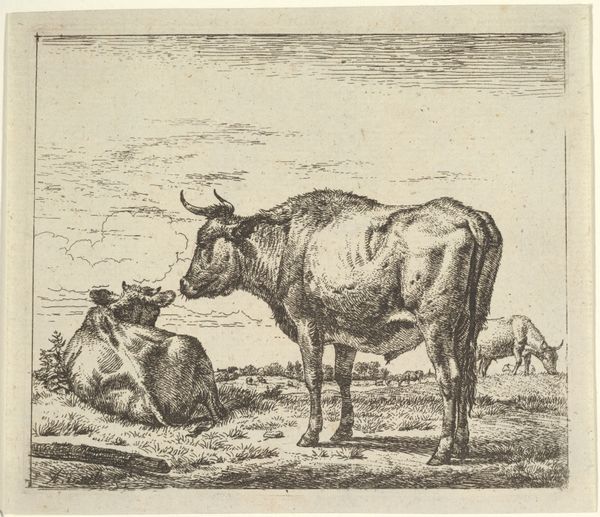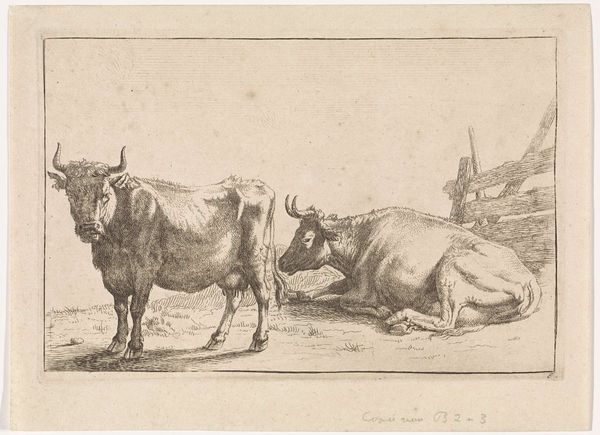
Drie koeien en een jongen in een weiland c. 1748 - 1771
0:00
0:00
drawing, print, etching
#
drawing
#
animal
# print
#
etching
#
landscape
#
genre-painting
Dimensions: height 73 mm, width 118 mm
Copyright: Rijks Museum: Open Domain
Editor: This etching, “Three Cows and a Boy in a Meadow,” was created by Théodore Wynant Stallenbergh sometime between 1748 and 1771 and is currently held at the Rijksmuseum. It feels incredibly detailed, but also quite serene. What do you see when you look at this print? Curator: The most striking element, to me, is Stallenbergh's mastery of line. Notice the density and variation, particularly in the rendering of the animals' forms and the figure of the boy. How do these lines contribute to the overall composition? Editor: I guess the cross-hatching gives the cows a sort of bulky, three-dimensional quality, which contrasts with the lighter, more open lines in the sky. Is that intentional, do you think, to create depth? Curator: Precisely. And observe the strategic placement of the figures – the cows in the foreground establishing the immediate space, the boy framing the middle ground, and the suggestion of a distant church spire on the horizon. Does this structured arrangement affect your perception? Editor: Yes, it creates a sense of organized space and directs the eye purposefully, despite the seemingly casual subject matter. The composition guides your gaze even as the details fill the scene. I see what you mean now by mastery. It's like a very calm ballet. Curator: Indeed. Stallenbergh has harnessed the intrinsic qualities of etching – the fineness of the line, the tonal variations – to construct a cohesive and engaging visual experience. Have you learned anything new? Editor: I never really considered how much could be conveyed through something as simple as a line. Now I'm seeing that an artwork isn’t just _what_ is there, but _how_ it is made. Curator: A valuable lesson. This piece demonstrates how formal elements shape our understanding and appreciation of the work.
Comments
No comments
Be the first to comment and join the conversation on the ultimate creative platform.
